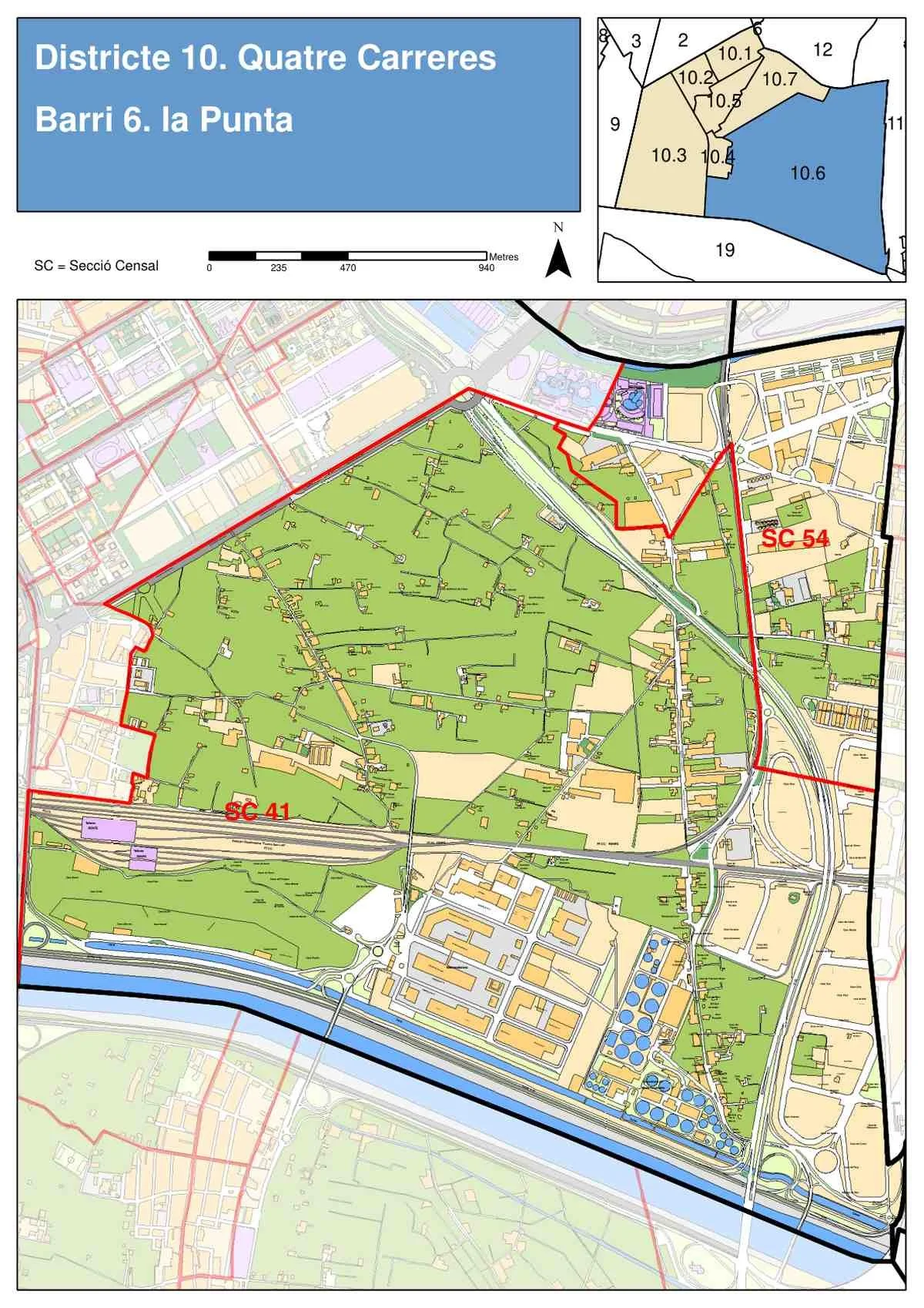Neighborhood Spotlight — La Punta
La Punta is Valencia’s village‑within‑the‑city—semi‑rural lanes, traditional houses, and a pace of life shaped by the surrounding huerta. For expats, it offers authenticity, affordability, and direct ties to Valencia’s agricultural heritage, all while being minutes from the City of Arts & Sciences and the Turia Gardens.
Quick Facts & Maps
Parent District: Quatre Carreres
Vibe: Semi‑rural, traditional, community‑oriented
Transit :Bus routes connect to city center; cycling is excellent; metro nodes in adjacent barrios
Green Space: Surrounded by huerta farmland; quick ride to the Turia Gardens and Parque Central
Housing: Mix of village houses, small apartment blocks, and newer builds near district edges
Good For: Families, retirees, those seeking authenticity and calm
Noise Level: Low (except during fiestas and harvest season)
Walkability: Strong inside the village core; cycling connects everything else
Overview
La Punta is a unique hybrid: technically part of Quatre Carreres, yet it feels worlds apart from the city’s buzz. Life here is defined by huerta fields, quiet village lanes, and a strong sense of community. Residents greet each other at small groceries, kids play in the street, and fiestas fill the local plaza. Yet within 10 minutes you can be in Ruzafa, at the arts complex, or in the Turia Gardens.
For expats, the draw is twofold: affordable housing and authenticity. While apartments dominate central Valencia, here you’ll find traditional houses with courtyards, small low‑rise blocks, and even opportunities to rent or buy homes with land. It’s a lifestyle choice that emphasizes space, quiet, and tradition, without giving up access to culture and transit.
A Deep Dive into History
La Punta traces its origins to Valencia’s agricultural past. The huerta—a patchwork of irrigated farmland surrounding the city—has been cultivated for centuries. La Punta developed as a small village within this landscape, its economy and daily life tied to farming and local markets. Even as Valencia urbanized through the 20th century, La Punta maintained its semi‑rural character.
Community identity has been tested by development pressures, but the village’s historic core and agricultural ties remain strong. Many families have lived here for generations, preserving traditions, recipes, and fiestas that connect directly to the land. Walking its streets is a reminder that Valencia’s global profile still rests on deeply local roots.
Why Expats Love La Punta
Expats who choose La Punta usually fall into two categories: those craving authenticity and those seeking more house for their budget. You can live in a traditional home with space for a garden, join local fiestas, and still reach downtown in minutes. The trade‑off is fewer modern conveniences—but for many, that’s part of the appeal.
Housing & Lifestyle
Housing includes village houses with tiled roofs, courtyards, and rustic details; small apartment blocks with 2–3 bedroom flats; and newer builds on the district edge. Families appreciate outdoor space and community safety, while retirees enjoy the quiet rhythm of life. Daily lifestyle revolves around the plaza, local shops, and the huerta, with larger errands a short drive or bike ride away.
Getting Around
Bus lines connect La Punta to central Valencia, though many residents rely on bikes or cars. The Turia Gardens are minutes away, providing a direct car‑free link into the city. Driving offers fast access to Valencia’s ring roads and the airport. While not as transit‑dense as Ruzafa or Mont Olivet, mobility is practical and flexible.
Food & Culture
Food here is tied to tradition. Local bars serve hearty menus, family‑owned bakeries supply fresh bread, and neighbors share produce from the huerta. Fiestas bring paella competitions, parades, and music into the streets. For broader variety, Ruzafa and the city center are close by, ensuring residents never feel isolated from Valencia’s culinary scene.
Green Space & Leisure
Surrounded by farmland, La Punta is essentially embedded in green space. Residents garden, walk through fields, and cycle into the Turia Gardens or Parque Central. Leisure is outdoor‑driven—community sports, village plazas, and huerta walks. Families enjoy child‑friendly plazas and direct ties to nature that central barrios can’t offer.
Schools
La Punta offers a handful of public schools, with concertado and international options accessible via short commutes. School runs are typically by bike or car. For families prioritizing green space, La Punta provides an appealing backdrop for raising children, with space for after‑school activities outdoors.
History & Heritage
Heritage here is agricultural. Traditional farmhouses, village churches, and huerta irrigation systems form the backdrop to daily life. While modern apartment blocks exist, the essence of La Punta lies in its semi‑rural lanes and the resilience of community traditions. Fiestas, religious celebrations, and seasonal harvest rituals keep heritage alive.
Insider Tip
If you’re looking for space, ask about homes with courtyards or land—these are rare in central Valencia but common here. Expats often find joy in cultivating small gardens or simply enjoying evening meals outdoors.
Annual Events in La Punta
Las Fallas: celebrated at village scale, with bonfires, fireworks, and neighborhood monuments.
Harvest Festivals: tied to agricultural cycles, these include parades and communal meals.
Patron Saint Fiesta: the local church anchors annual celebrations that bring residents together.
Understanding the Quatre Carreres District
Quatre Carreres balances modern icons like the City of Arts & Sciences with traditional enclaves like La Punta. Living here gives expats the chance to experience Valencia’s contrasts—futuristic architecture minutes away from village plazas and farmland.
Relocation Tips for Moving to La Punta
• Expect fewer modern conveniences—plan to bike or drive for larger errands.
• Prioritize refurbished houses for better insulation and modern kitchens.
• Engage with the community—expats who integrate into fiestas and traditions thrive most.
• If you need quick metro access, consider adjacent barrios.
Similar Neighborhoods
Less Expensive Alternatives
Useful Links
Thinking about relocating to Valencia?I can help you shortlist the right streets and buildings, line up visits, and handle the admin so you can just move in.— Amanda Chigbrow, LaVidalencia Relocation •@LaVidalencia•La Vidalencia on Facebook


